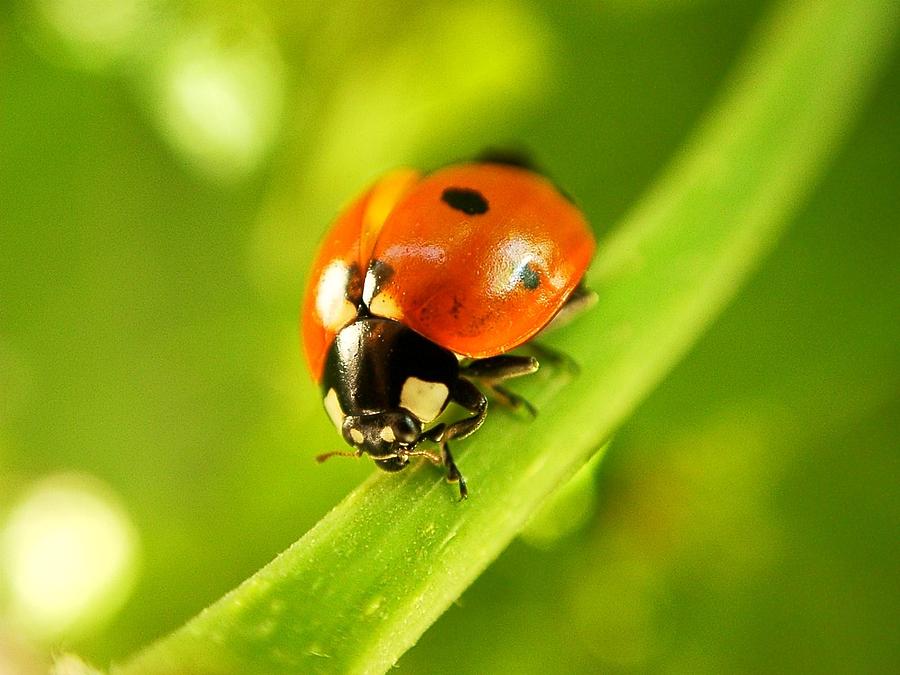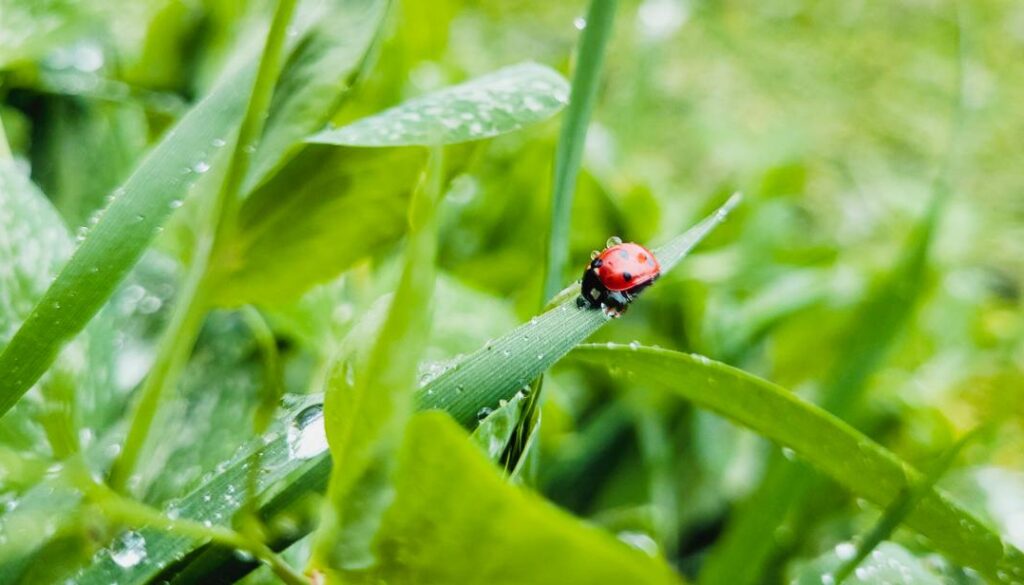Create ecosystems, don’t destroy them
Rainy day today, I was walking in the garden observing nature and I found this ladybug resting on a leaf of a rye grass surrounded by autumn peas, and it made my day.
Do you want to know why?
Create an Ecosystem
This is a tricky subject in terms of what is creating an ecosystem. If we refer to the dictionary, it says the following:
Ecosystem: “An ecological community together with its environment, functioning as a unit.”
Obviously, we cannot create an ecosystem itself, but we can take steps to condition this community. How?
- By not being destructive, something that, especially in traditional farming, we have been doing for a long time.
- By respecting and observing nature. She is the wisest, and yet we still think that we can control her and manipulate her for our own good.
- Understand the relationship of every organism inside of this community so we don’t interfere and disrupt the ecosystem.
Let me tell you the story of the Ladybug to represent what I mean with these points.
.jpg)

The Ladybug
Last year, I found that one of my plum trees, which was only one year old, was full of aphids. It was completely covered, and it looked awful.
I immediately freaked out, even though I understand that it is part of nature, and they have a function. I didn’t want them to damage my tree. Other times, I prepared a natural pesticide with nettle tea and sprayed it every day just to get them out of the tree.
Well, I cannot tell you if this solution worked, but this time, I decided to do something different. I decided to observe and let Nature do its thing.
On my panic when I saw all the leaves full of aphids, I didn’t see that there were a couple of ladybugs. Immediately, I felt calmer, since I know that aphids are one of their favorite meals (they can eat 50 per day, 5,000 in a lifespan).
So I stepped back, I let them do their thing. Days were passing, and the aphid situation was out of control. I saw the ladybugs going close to the aphids and doing nothing. I was impatient, I was literally “talking” to them, saying “C’mon, do your job, eat!” There is where I learned that it was so typical human to rush things and be impatient. We live in a society where we have everything at hand, and we want it as soon as possible, full with dopamine stimulants, and we forgot to just be patient and observe. We can’t control everything, no, this.
So I waited, and you know what? After a couple of weeks, the tree was full of ladybugs, and not a single aphid remained. It started with a couple, and slowly more were attracted, and by just doing their part in the ecosystem, they “solved” my problem.
Do you want to know what I learned?
The main lesson to be learned is...
Work with nature and not against it.
Because, for example, what if I would have decided to kill all the aphids using chemical pesticides? Maybe the problem would have been fixed, but I would have also killed the ladybugs and other beneficial insects. What’s the point? By trying to control Nature, to eradicate the “problem,” we create many other problems, plus we are disrupting the normal and natural cycle of that ecosystem just for our own benefit.
I learned I have to trust and be patient, observe. What if the ladybugs will not eat all the aphids and the tree dies? Well, that will have been another story and another lesson, but at the end, I will just accept it.
If you read till this long, then I’ll tell you why it made my day to see this ladybug today, because it reminded me of this lesson, but also because it was just resting under the same plum that last year got “attacked” by aphids… maybe it’s a coincidence, but I like to think that even they know that probably aphids will attack this tree again this year, and they will be there to feed on these aphids and to fix, indirectly, this “problem” for me.
Be patient, respect nature, respect the ecosystem, learn from them, observe them, and act accordingly.
Nature is a gift, and it seems sometimes that we are determined to destroy it.



